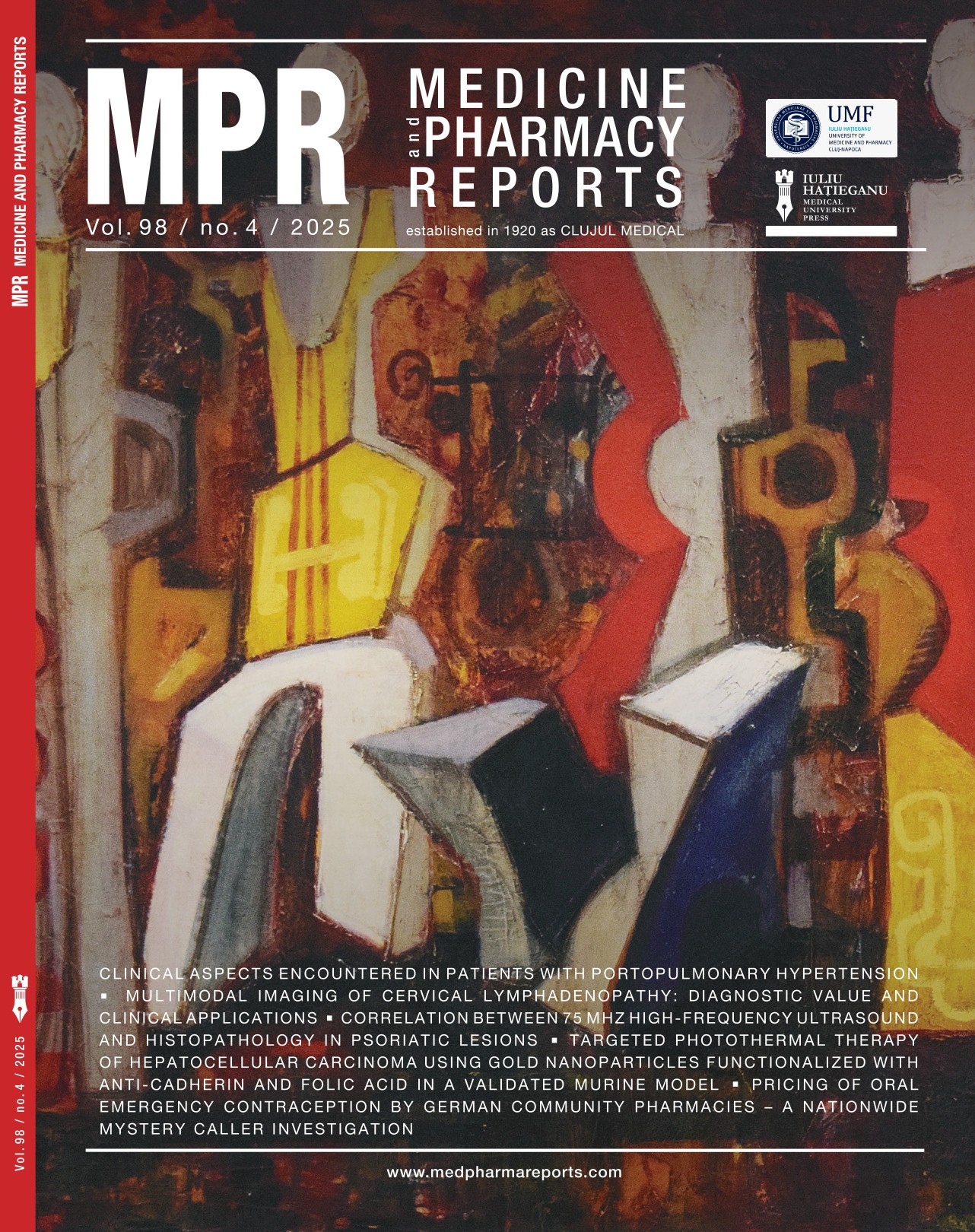Targeted photothermal therapy of hepatocellular carcinoma using gold nanoparticles functionalized with anti-cadherin and folic acid in a validated murine model
DOI:
https://doi.org/10.15386/mpr-2905Keywords:
Gold Nanoparticles, Photothermal Therapy, Targeted Nanotherapy, Murine Models, Hepatocellular CarcinomaAbstract
Background. Hepatocellular carcinoma (HCC) remains a major therapeutic challenge with limited treatment options. Nanotechnology, particularly the use of gold nanoparticles (GNPs), offers new perspectives for targeted photothermal therapies.
Objective. This study aimed to develop and evaluate the effectiveness of nanomediated photothermal therapy (PTT) using GNP functionalized with folate and anti-Cadherin-1 antibodies (Cad-1) in the treatment of HCC in a validated murine model.
Methods. A bionanosystem composed of gold nanoparticles conjugated with polyethyleneimine (PEI), folic acid (FA), and Cad-1 was synthesized and characterized. A HCC murine model was induced by administration of diethylnitrosamine and carbon tetrachloride. After tumor confirmation, animals were divided into four groups and treated with different doses of the nanoconstruct, followed by near-infrared (NIR) laser irradiation (808 nm). A total of 16 animals were allocated into four experimental groups (n = 4 per group). Histological analysis and serum biochemical assays (aspartate aminotransferase (AST), alanine aminotransferase (ALT), alkaline phosphatase (ALP) and gamma-glutamyl transferase (GGT)) were performed.
Results. The treatment induced focal coagulative necrosis within tumor regions, with minimal impact on surrounding healthy liver tissue. Significant reductions in AST and GGT levels were observed in animals treated with higher doses (p < 0.05), confirming the efficacy and selectivity of the therapy. Immunohistochemistry confirmed E-cadherin overexpression in tumor tissue, suggesting a possible diagnosic potential for the targeting system.
Conclusion. The GNPs-PEI-FA-Cad-1 system demonstrated promising results for targeted photothermal therapy in HCC, with selective tumor ablation and limited hepatotoxicity. The validated murine model provides a robust platform for preclinical assessment of similar nanotherapies.
Downloads
Published
How to Cite
Issue
Section
License
Copyright (c) 2025 Medicine and Pharmacy Reports
The authors are required to transfer the copyright of the published paper to the journal. This is done by agreeing to sign the Copyright Assignment Form. Whenever the case, authors are also required to send permissions to reproduce material (such as illustrations) from the copyright holder.

The papers published in the journal are licensed under a Creative Commons Attribution-NonCommercial-NoDerivatives 4.0 International License.

